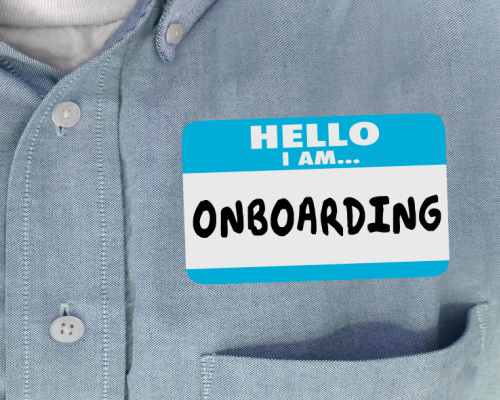You’re Already Onboarding
Date
Onboarding happens all the time whether we are aware of it or not. By recognizing this and being intentional in our practices, we can improve the experience and outcome for everyone.
We engage in onboarding experiences regularly in our daily lives. It might be onboarding at work when we start with a new company or are promoted to a new position. It might be in our homes when we’re bringing home and introducing our loved ones to a new family member. Onboarding also happens everyday in classrooms as teachers ensure students feel welcome, confident, and equipped to be successful in their daily work.
But What Makes Onboarding Different from Orientation?
Onboarding is an intentional process of integration and familiarization. Unlike orientation, which can be a solitary or passive experience to learn more about something, onboarding requires planning, shared ownership, and collaboration, and often offers benefits to everyone involved. A good onboarding plan focuses on building community while increasing knowledge and skills.
New employee onboarding is crucial to a successful hiring process. When introducing someone new to an organization, it isn’t enough to simply orient them to their position, the tools they’ll use, or the skills they will need to develop. Onboarding is an opportunity to immerse someone in an organization’s culture and help them feel they belong. Intentional onboarding experiences offer a chance to build relationships and trust that allow people to thrive.
Clarity’s Approach to Onboarding
At Clarity, we have designed an onboarding program that involves team members from across the organization. Even in our distributed workplace, every department is represented and participates in onboarding new team members. By making onboarding a collaborative experience, it benefits new hires, and existing team members alike.
Our onboarding process for new hires is intentionally built with key benefits in mind:
- Feeling a sense of belonging. During a new hire’s first week, we begin and end the day with a check-in meeting. This gives them an instant connection to colleagues who can listen, answer questions, and make sure they get what they need whether it’s more information or a connection to another colleague who can assist them. These twice a day check-ins, along with occasional messages during the day, allow us to gather feedback on how the day went, including thoughts about scheduling, questions they still have, things they want to learn more about, or where they might need more support.
- Understanding how to be successful. When starting at a new organization, there are countless tools, processes, and procedures someone has to learn. It can be easy to feel overwhelmed, so we focus on what a new hire needs to know within their first few weeks to be successful, including tools and skill sets that are most important for beginning their role and function in the organization. This timely release of knowledge helps to avoid information overload and allows us to focus the new hire’s experience on what really matters – building trust and relationships with others on the team.
- Connecting with colleagues. Throughout the experience, we provide numerous opportunities for new hires to meet colleagues from across the organization. We schedule informal company-wide meet and greets, small group gatherings, and team meetings all with the goal of helping a new hire get to know people and feel more comfortable. They connect with people both in and outside of their department, learn about what everyone does at Clarity, ask questions, and begin to build connections with colleagues. In addition, team members across departments lead individual training sessions with the content to cover already scaffolded to help both current employees and new hires feel comfortable and engage in meaningful conversations. Checklists indicating what should be covered, also serve as a great starting point for any potential follow up session.
Everyone Wins
By including team members from across Clarity in new hire onboarding, our organization benefits on many levels. Current employees gain a sense of shared ownership in team building and connection with new hires. Our documentation and understanding of processes and concepts is improved across the company, and intentionally planning and discussing the onboarding process offers transparency and recognition of processes that need improvement. The business also benefits from this approach through improved team member connections, higher retention rates, and less time before new hires feel productive within their roles.
Where We Go From Here
With each new hire we onboard, we collect feedback throughout the experience. We set aside meeting time for them and their manager to discuss the onboarding process, challenges, things that have been helpful, and where we have room for improvement before the next new hire. We’ve learned each new hire has appreciated the opportunity to build relationships and trust early. They note that having intentional time to learn from and meet colleagues from across the organization has made a huge difference in their sense of belonging here.
Onboarding doesn’t just apply to new hires. We apply these same principles when we onboard team members to new projects, process improvements, and new tools.
We all can grow and improve by helping to make things better for those around us. If you are considering how to improve your own onboarding process, here are some questions to get you started:
- How do your onboarding efforts promote connectedness and belonging for new hires?
- What skills or tools are essential for a new hire to know in their first few weeks at your organization? Which pieces can wait?
- What opportunities exist to intentionally gather feedback about the onboarding experience?
- How might onboarding efforts support current employees’ understanding of processes, procedures, or even new work or projects?
- What opportunities exist to extend onboarding efforts to client projects or learning new tools?

